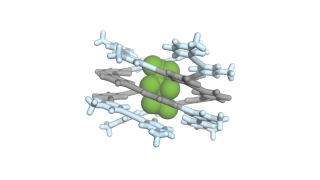In Zambia, the goal of teaching has been instructing reading in Bantu local languages which children speak in society though the reading levels have been very poor. This could have been due to inappropriate instruction or dyslexia.
In his study, MA (Edu.), Jonathan Munachaka assessed whether GraphoLearn, a computer-mediated phonics-based intervention, effectively identifies and helps children with dyslexia learn to read the familiar local language, Chinyanja. GraphoLearn is based on the Finnish learning-game ‘Ekapeli’.
The game identifies and helps children with dyslexia learn to read
The identification of children with dyslexia in Zambia is difficult unless learners are instructed to learn to read in an optimal way so that environmental and biological factors are differentiated. The GraphoLearn (GL)- implemented dynamic assessment (DA) procedure was used as an optimal method to identify and support children with dyslexia. The DA approach adopted the pretest/intervention/posttest assessment model where the children played the game for ten days.
‘’The findings showed that the majority (25) of the children who were initially at risk of dyslexia were helped and supported to learn to read. Only six children's reading skills on post- GL spelling did not improve despite the optimal phonics instruction provided by the GL- DA intervention and were suspected of having dyslexia. Children suspected of having dyslexia, hence resistant to reading performed persistently poorer than non- reading resistant children in all reading assessments in the six year- follow- up study with multiple assessments,” says Munachaka.
The results confirm the predictive accuracy of DA. The study also confirms that GL is an effective DA method for the identification of dyslexia in Zambia. The results tend to confirm the validity of predictive accuracy of DA in the identification of dyslexia. These findings show that Zambian children need extra support in learning to read. The results of the study are in line with Hatcher et al. (2004)’s findings that children who are at risk of dyslexia are likely to benefit from additional supportive phoneme awareness training which is linked to letter- sounds. Because of this validity, the GL-DA procedure can be used in Zambia through the GL use and not only solely relying on the traditional assessments to measure the reading skills.
In addition, the results of the PhD study showed that the DA procedure is a cost-effective identification procedure that could help Zambian children who have biological problems that prevent them from learning to read. Dynamic Assessment is based on the assertion that conventional traditional assessment is neither accurate nor instrumental in evaluating abilities and skills or satisfying the educational profiles of children with special needs (Grigorenko, 2009).
Research on GlaphoLearn enhanced instruction is usable and needed in Zambia
The thesis provided valuable research evidence that literacy instruction based on teaching letter-sound correspondence is effective for children instructed in transparent orthography. Therefore, GL is ideal for children who are not benefiting from reading instruction as it is in Zambia today where children are defined based on traditional assessment tools as having dyslexia– a biological reading risk.
Research future directions
However, this research is small but important piece of research building basis for the very ambitious research to train Zambian children to acquire full literacy, skill required through reading itself.This operation intends to test the extent the new technology, the artificial intelligence, can help to enhance the human capital of poorly resourced countries such as Zambia by training the children to acquire full literacy. The new digital training games purport to train all Zambian children to read full literacy, including comprehension of written language (local and English in Zambia) to make learning possible via reading. Elevation of human capital this way might be possible everywhere in the country to push for the country development. The level of full literacy which one of the digital tools offers helps children at early age to comprehend written language. Their parents can also learn to write questions and understand the answers given by the free artificial intelligence chatbots, such as DeepSeek and artificial intelligence bots.
MA (Educ.) Jonathan Munachaka defends his doctoral dissertation "In search of a way of identifying and helping children with dyslexia learn to read in Zambia” on September 11, 2025. Opponent is Professor Elena L. Grigorenko (Houston/ Yale University and Custos Professor Marja-Kristiina Lerkkanen (University of Jyväskylä). The public defense is held in English.
The defense will be streamed.
The dissertation can be read online: https://urn.fi/URN:ISBN:978-952-86-0782-3
More information:
Jonathan Munachaka, jmunachaka@gmail.com






